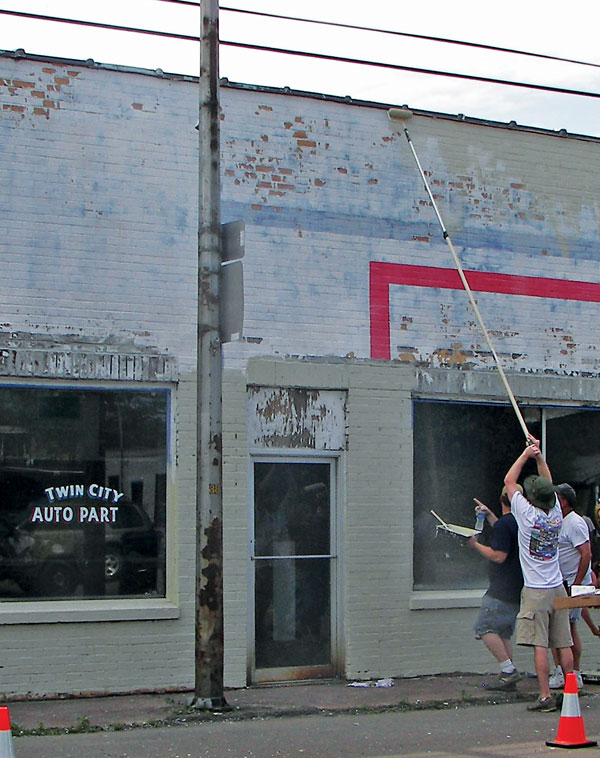Why would a company locate its business in a small town, far from the economic activity of large cities? Such a decision doesn’t make sense for every company. But for some it makes perfect sense.
To begin with, a company with customers in a number of large cities may find that the central location for all of them happens to be “in the middle of nowhere.”
But there are other reasons. Some companies find that small towns roll out the red carpets and provide extremely individualized and personalized service — the opposite of what they may encounter when setting up business in a large city. Others find that certain rural areas have uniquely experienced work forces, which reduces supplemental recruiting and training expenses. A fourth reason is community pride. That is, some small towns offer a cohesive presence to employers. A final reason can be the most basic of all: The raw materials are there.
They Pay Attention to Us
Ardmore, Okla., is unlike most towns in the U.S. in that employment numbers have been going up instead of down. Employment has increased by almost 7,000 people over the last decade in this town of 25,000, and unemployment is currently at an impressive 4 percent.
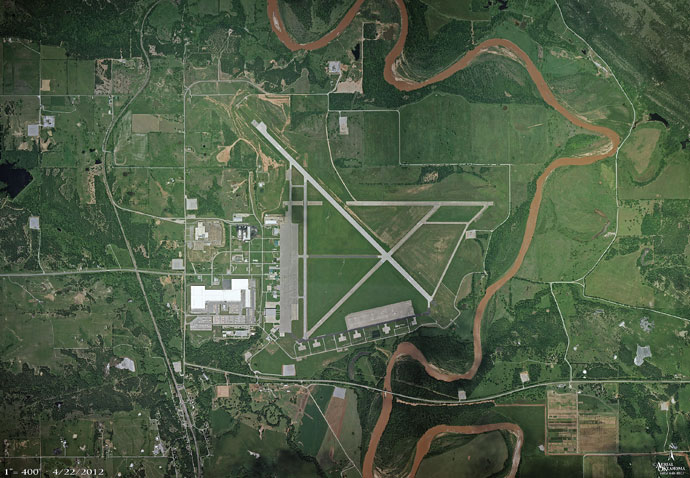
One reason businesses find Ardmore attractive is its location midway between Dallas and Oklahoma City. But there is more to it than that. The town began its efforts to attract new business in the mid-1980s, as a result of the downturn in the energy sector at that time. The community decided to fund an economic development program, and some private money was raised to start the industrial park. “We have built more industrial parks since and have achieved a rate of slow, steady and manageable growth ever since,” reports Wes Stucky, president and CEO of the Ardmore Development Authority.
One reason the industrial parks attract business is that the sites are fully developed. “We typically end up building the buildings for them and providing them at very reasonable costs,” he continues.
Another reason is that the town focuses on attracting a certain type of business — smaller entrepreneurial companies. In fact, it has developed a specialized technology park and is in the process of building its second technology incubator. “We have purchased over $1 million worth of equipment that is available for these small companies to use for a fee,” says Stucky. For example, the Authority just took delivery on an expensive MOCVD (metal organic chemical vapor deposition) system for chlorine-treated gallium nitride. The cadre of equipment provides a lot of things that smaller technology companies need, but can’t afford themselves.
One satisfied company is Amethyst Research, Inc., a start-up company located in the Ardmore Technology Transfer Center. The company is developing advanced semiconductor process technology that will be used to manufacture next-generation infrared night vision imagers. The company currently employs 10 people, including five Ph.Ds, and operates out of 11,000 sq. ft. (1,022 sq. m.) of office and lab space.
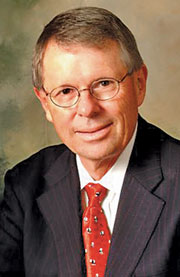
“We wanted to locate in either Texas or Oklahoma,” explains Terry Golding, president. “However, we wanted to locate where we would be recognized and where people would listen to what we needed. Ardmore made a lot of sense, because the Ardmore Development Authority had a reputation for being very responsive and having a ‘can do’ attitude. We had quick and easy access to the key people, such as Wes Stucky. We realized that, in a larger city, we would have just been a number.”
The company is happy with its decision to locate in Ardmore. “We wouldn’t be nearly as far along with our business had we not located here,” states Golding. “In fact, we are now working with [the Authority] to bring other technology companies into Ardmore, so that we can partner with them. The result will be a small ecosystem of high-tech companies involved in semiconductor devices.” As Golding sees it, without the time and attention from the Ardmore Development Authority, Amethyst Research wouldn’t have been able to attract and recruit these other companies to Ardmore.
They Have an Experienced Work Force
Most of the service territory of the Tennessee Valley Authority (TVA) is rural. “As such, it makes a lot of sense to us to focus on economic development initiatives with rural communities in mind,” says John Bradley, senior vice president for TVA’s economic development office in Nashville, Tenn.
However, providing economic development assistance to small towns creates a host of challenges not present in large cities. When Rachel Crickmar, TVA’s senior program manager for rural initiatives, and her staff talked to the department’s field staff two years ago, the message that came back was that communities have very limited resources, and leaders wear multiple hats. “They have a lot of resources and programs available from us and other agencies, but no one has knowledge of how to put those resources and programs together,” she explains.
TVA’s economic development office works with rural communities to help them be prepared with products, buildings, land and leadership development, giving them the tools to respond to RFPs. Specifically, the office has three areas of focus: recruitment of new industry, retention of existing business and community development.
To address these, the office focuses on community preparedness to help communities be prepared for growth, highlight their assets and focus on regionalism; partnership with state, regional and local organizations; and rural strategies, including leadership and skills development, product development and customized incentives and programs for rural communities.
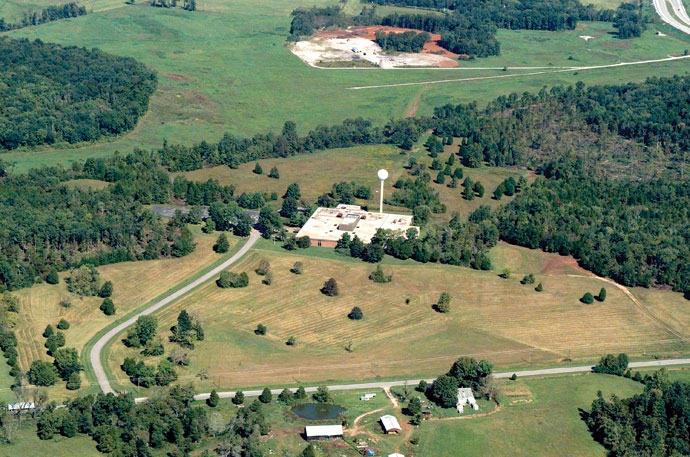
Last year, TVA’s economic development office created the Rural Leadership Institute, one of very few in the country, according to Crickmar. The first class graduated 18. “We teach leadership skills, but with a focus on rural economic development and practical use,” she says. “We have a waiting list for the next program.”
Within TVA’s service territory are certain communities that have found great success over the decades by relying on individual corporations. Examples include Alcoa-Maryville, Tenn. (Alcoa) and Kingsport, Tenn. (Eastman Chemical). These days, though, according to Bradley, more and more communities are focusing on diversification.
“If large companies decide to leave or cut back in a small town, it can be devastating to the whole community,” he explains. “For example, when Goodyear shut down its plant in Union City, Tenn., it was a big problem. These days, communities aren’t looking for the ‘big hit.’ They are looking for diversification.”
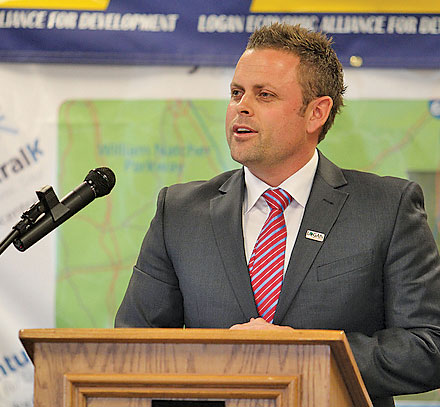
One company that is attracted to TVA’s service territory is MHM Metals, Ltd., based in West Perth, Australia. In 2011, the company made the decision to open a new processing facility in Russellville, Ky. “MHM has developed a proprietary process for recycling black dross and salt cake, which are byproducts from the secondary aluminum industry,” explains Ben Mead, director. This process is up and running successfully in Australia. “In 2011, we decided it was time to expand into North America, where we see immense growth potential. The Russellville facility will be our flagship North American processing facility.”
Why Kentucky? “In a word, logistics,” replies Mead. “Kentucky is located in the economic center of the secondary aluminum industry in Kentucky and Tennessee. The pro-business environment and availability of a skilled work force in Russellville were also important considerations.” According to Mead, Russellville offered a near-perfect 115-acre (47-hectare) site with all utilities in place and a willing seller. The Commonwealth of Kentucky, Logan County, Russellville, and TVA were all very supportive and business-friendly. “We were made to feel welcome and valued,” he adds.
In addition, the rural location offered a lower cost of doing business for MHM, an available site with large acreage for expansion and buffer, and a rural population with a “raised on the farm” work ethic, according to Mead.
They Showcase Community Pride
Until the last couple of years, the twin towns of Fulton, Ky., and South Fulton, Tenn., left a lot to be desired from an aesthetic point of view. The downtown areas were blighted with empty lots, boarded-up stores and sometimes less-than-visually-appealing existing businesses.
Jeff Campbell, chairman and founder of the Twin Cities Restoration Foundation in South Fulton, decided to do something about it. “You can’t attract new business if your community isn’t able to put its best foot forward,” he says. “If outside industry sees broken windows and vacant buildings and lots, they’re not going to be interested.”
Campbell had heard about a program called “Let’s Paint the Town” in Princeton, Ky., where a local visionary and filmmaker, Samuel Koltinsky, gathered the community together to literally paint the town and spruce it up to make it more visually and aesthetically pleasing to potential employers. Campbell felt that a “Let’s Paint the Town: Twin Cities” program could do the same for Fulton and South Fulton.
In May 2010, he hosted a town meeting asking for interested people to attend. He was hoping for 75, but ended up with 200 people and $4,000 in donations. He and his team thought about applying for state and federal grants. “However, we knew they were broke, so we decided to roll up our sleeves and do it ourselves,” he says.
The group canvassed all of the downtown building owners. Nearly all of them got behind the program and purchased the paint for their own buildings. The community raised additional funds for general supplies.
“We wanted a consistent look throughout the town, so we arranged for a woman in town who was an interior decorator to select the paint colors,” says Campbell. The group then asked some contractors to donate their time to remove boards from windows and replace broken glass. Community volunteers painted during the summers of 2010 and 2011, and continued to paint this summer. They are almost done, having completed 49 buildings.
However, the program is more than just paint. There were three vacant lots where buildings had been torn down. Two of these have been turned into parks. A community member purchased the third and opened a salon and spa, which is doing very well.
At the core of the whole program is economic development. “We were hoping that the program would regenerate interest in the downtown area, especially some of the vacant buildings,” explains Campbell. Since starting the project, four new businesses have opened in the downtown areas. “In sum, I can count a total of about $500,000 of new investment in downtown Fulton,” he says.
The next step? Reach out and encourage outside industry to consider moving to the now very visually appealing twin towns.
The Raw Materials Are Here
When one thinks rural, one often thinks farms. It makes sense that businesses involved in processing of agricultural products would want to set up in small towns. This is what is happening in Hardwick, Vt., in a region in the northern half of the state known as the Northeast Kingdom.
The Vermont Food Venture Center is an incubator facility for value-added food producers. Small business owners rent spaces to produce their own products, including jams/jellies, beverages and cocktail syrups. Initially, the center was located in Fairfax, Vt., farther to the west. But since Hardwick had an industrial park and a growing food movement, the decision was made to move the center there.
Much of the effort has been, and continues to be, funded by USDA grants. “The first grant was focused on working with the clients of the Food Venture Center and other small agricultural businesses in the Northeast,” explains Heidi Krantz, an advisor to the Vermont Small Business Development Center, which is part of the state’s Center for an Agricultural Economy. “The second grant continues to focus on the Food Venture Center, with less focus on other small agricultural businesses, but with a new focus on reaching out to small stores in the region to help make connections with the producers.”
Krantz’s organization provides counseling services for the businesses. “They are good at producing food, but they don’t necessarily have backgrounds in business,” she says. “We help them procure packaging and labeling, and also help with financing issues and regulatory issues.”
Currently, most producers located in the center sell locally. Some sell regionally, and some have expanded into New England as a whole. “Several are working on relationships with national stores,” says Krantz.
Setting up in Small Town America doesn’t make sense for every business. However, for many businesses, failing to at least consider the option can work against their best interests.
They may find that a rural location can be just the thing to help their businesses grow — sometimes faster and stronger than they would in larger metro areas.
